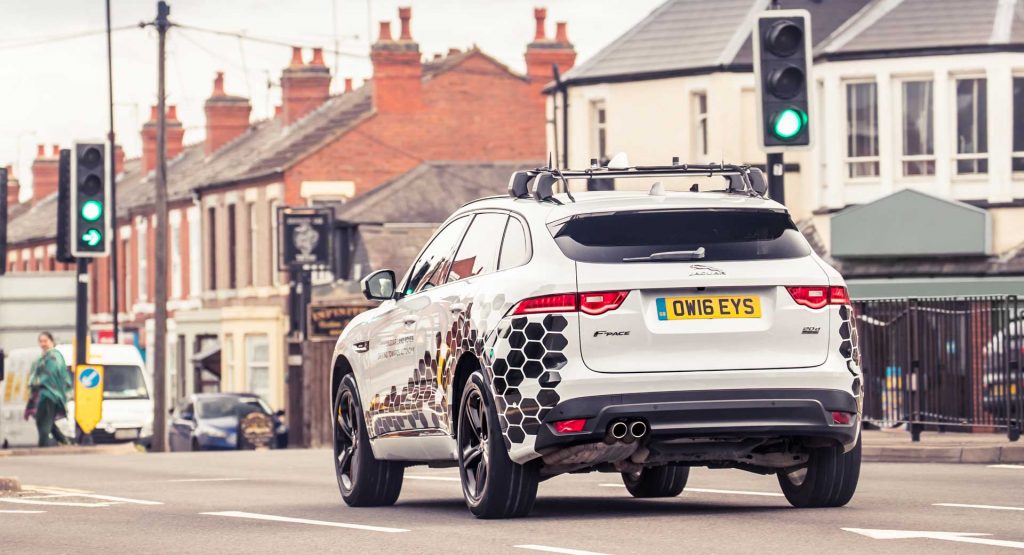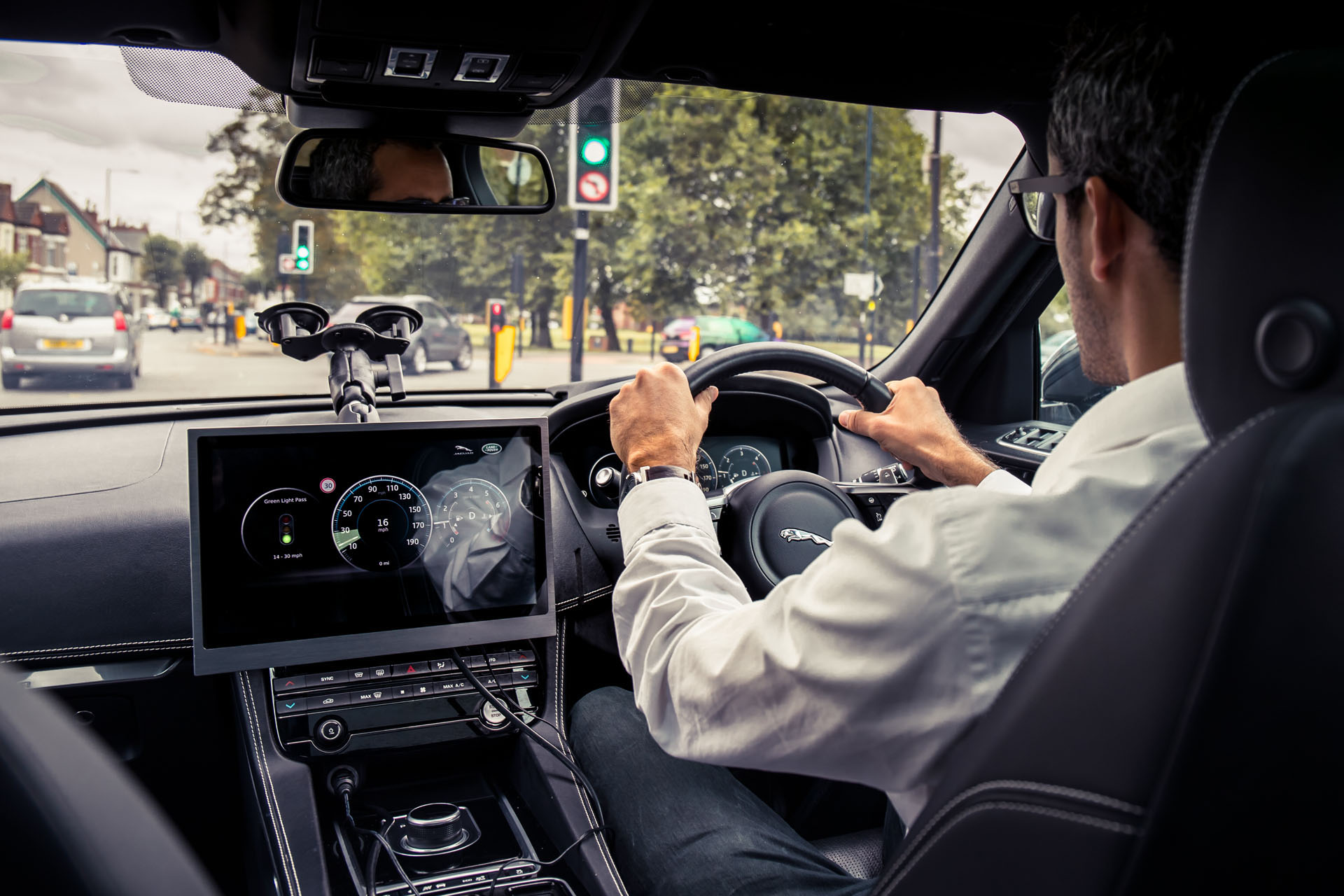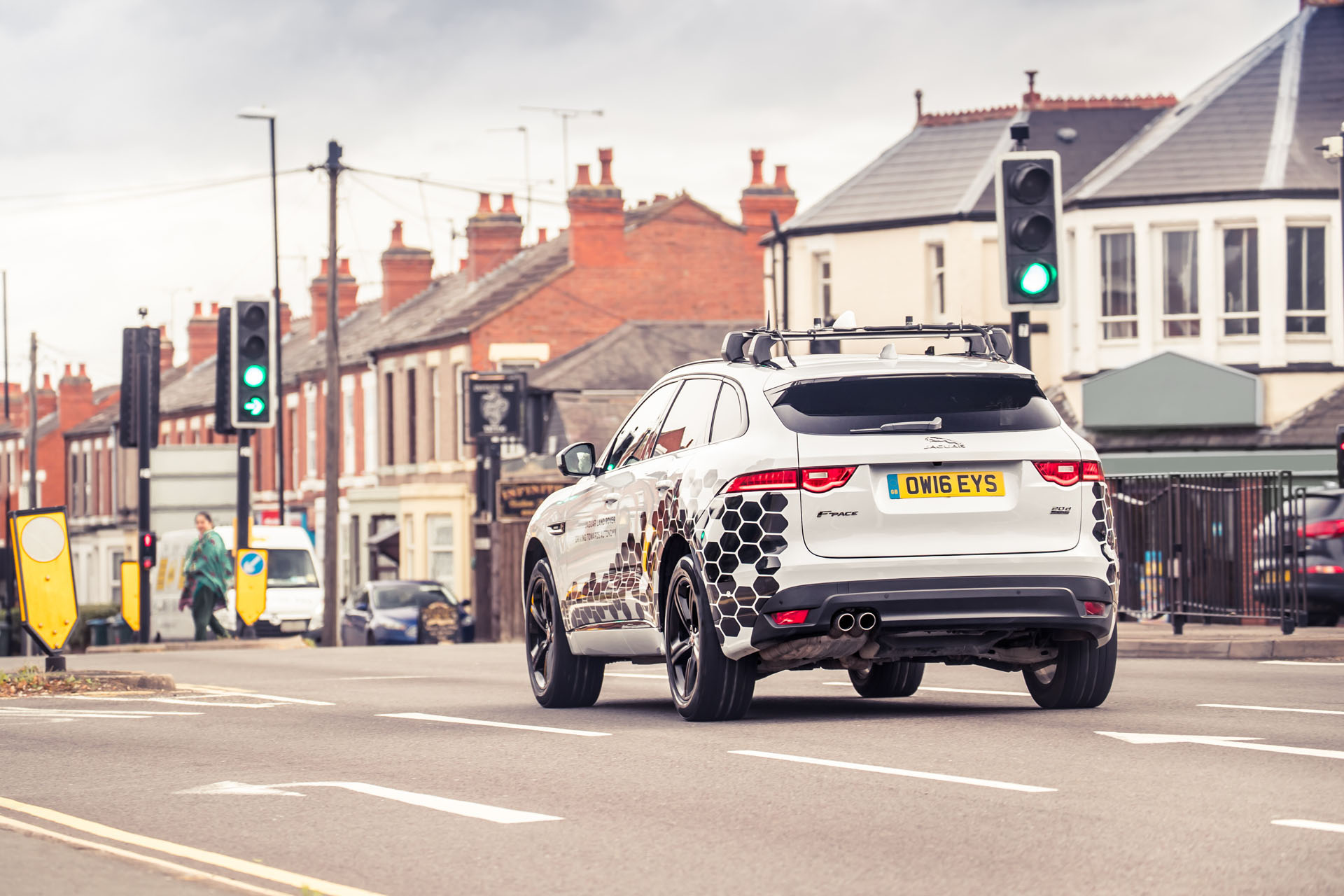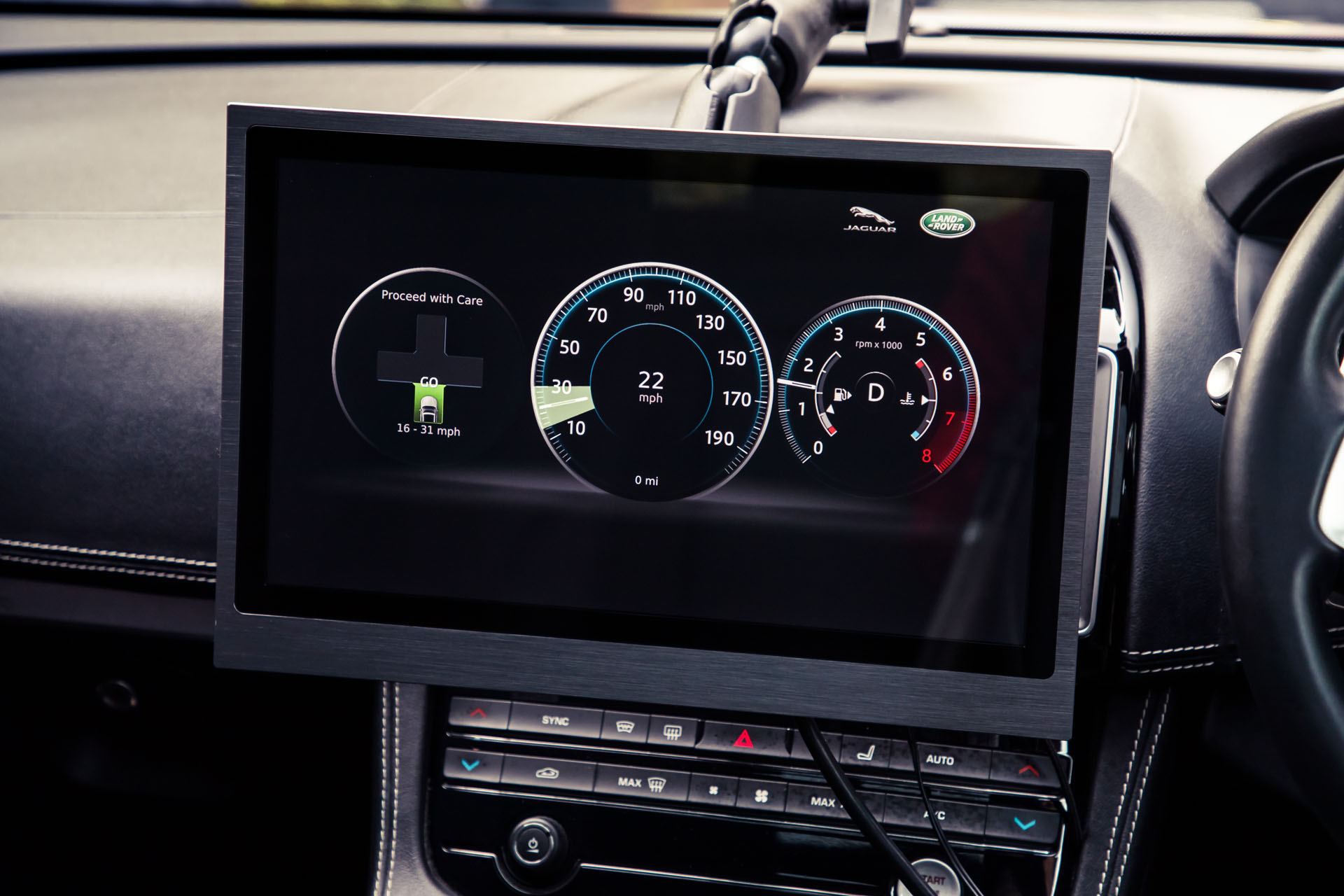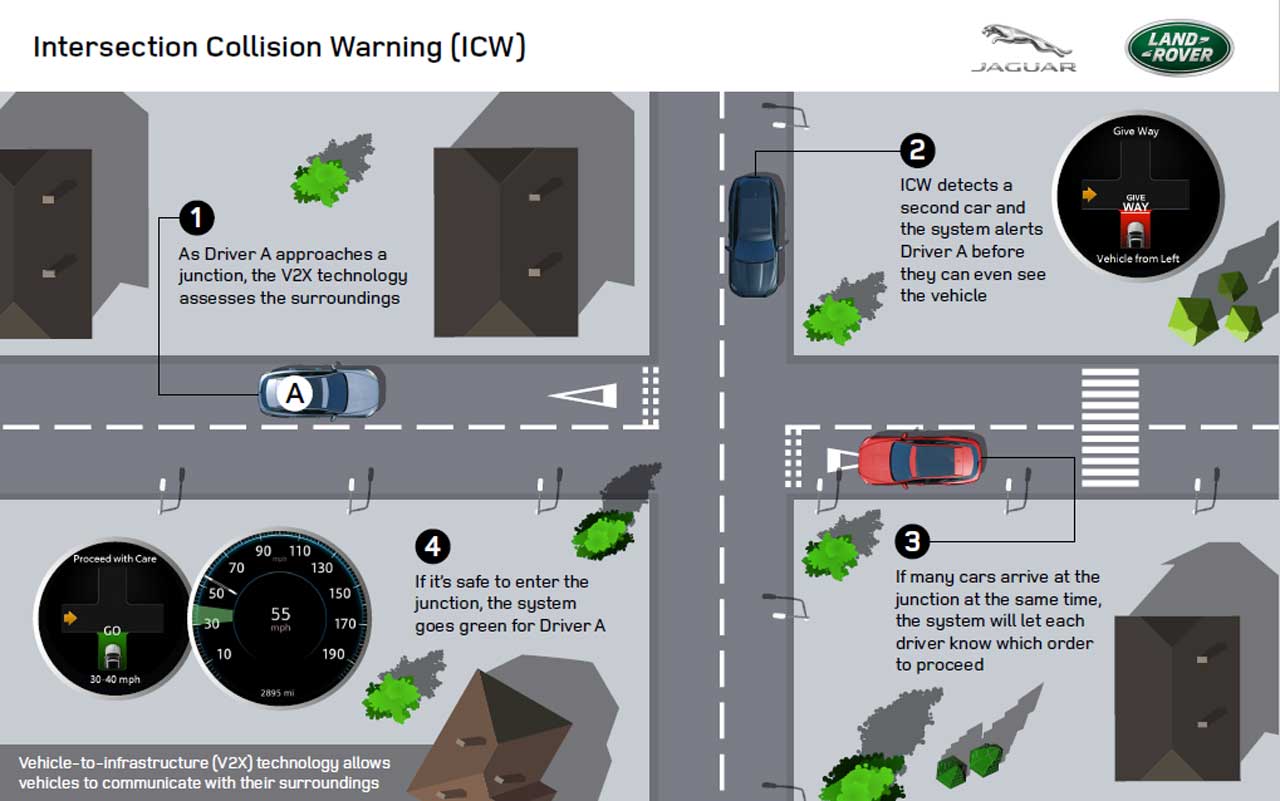You know the feeling when you hit every green light and your drive flows just perfectly? It takes a lot to make that happen. City planners need to time the lights just right to keep traffic moving freely, and the drivers on the road (including you and those around you) need to judge the speed just right, too. Well Jaguar Land Rover is out to take the guesswork out of the equation.
With support from the British government’s UK Autodrive initiative, JLR is developing the GLOSA: the Green Light Optimal Speed Advisory system. The Vehicle-to-Infrastructure (V2X) technology is designed to communicate with traffic lights and adjust the vehicle’s speed accordingly so you get nothing but green all the way along your route. And it’s testing the tech on an upgraded F-Pace crossover.
“This cutting-edge technology will radically reduce the time we waste at traffic lights,” said JLR connected technology engineer Oriol Quintana-Morales. “It has the potential to revolutionise driving by creating safe, free-flowing cities that take the stress out of commuting. Our research is motivated by the chance to make future journeys as comfortable and stress-free as possible for all our customers.”
Why Jaguar Land Rover, you wonder? For one thing, this has been a British issue for longer than anywhere else – ever since the world’s first lights were installed outside of the Houses of Parliament in London some 150 years ago. And JLR is the largest automaker in the UK. It’s also been investing heavily in next-generation automotive technology, developing advanced safety and self-driving systems at a pace you’d sooner expect from a much larger manufacturer.
Since partnering with the UK Autodrive project three years ago, JLR has developed such systems as Intersection Collision Warning (to alert the driver of potential dangers at junctions), Intersection Priority Management (to help multiple vehicles determine who has the right of way), Emergency Vehicle Warning (to alert of arriving police cars, fire trucks, and ambulances), Collaborative Parking (to provide real-time info on available parking spaces), Electronic Emergency Brake Light (to display when the vehicle in front suddenly brakes), and In-Vehicle Signage (that could replace expensive overhead road-condition warning systems).



